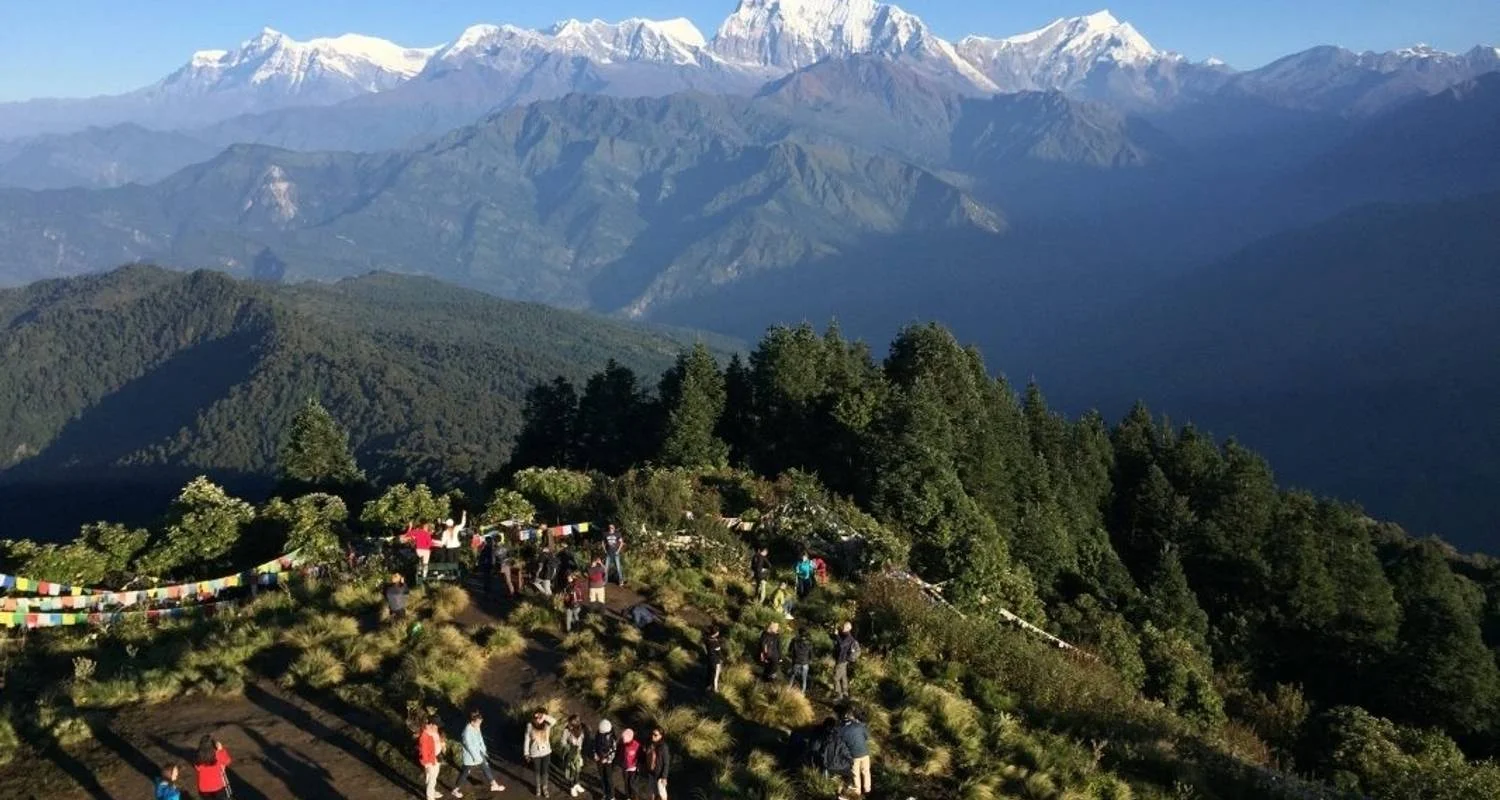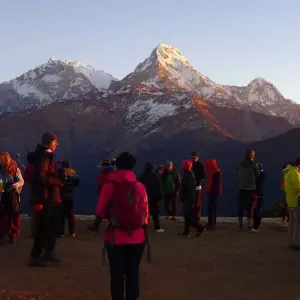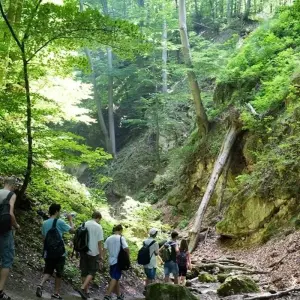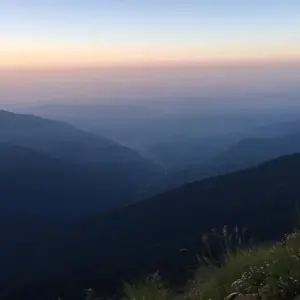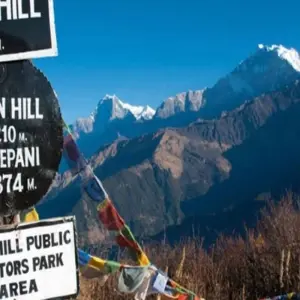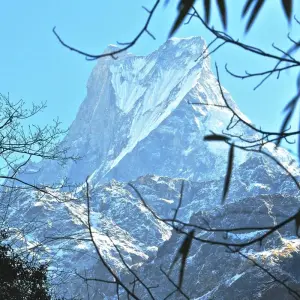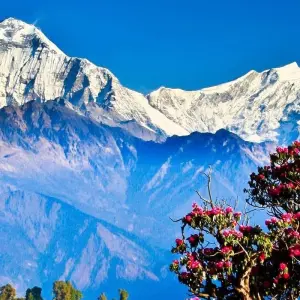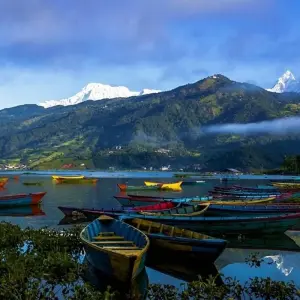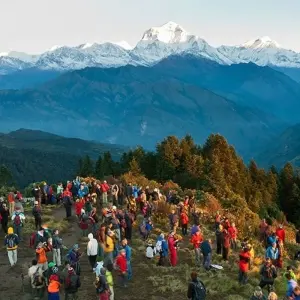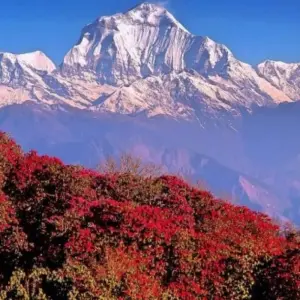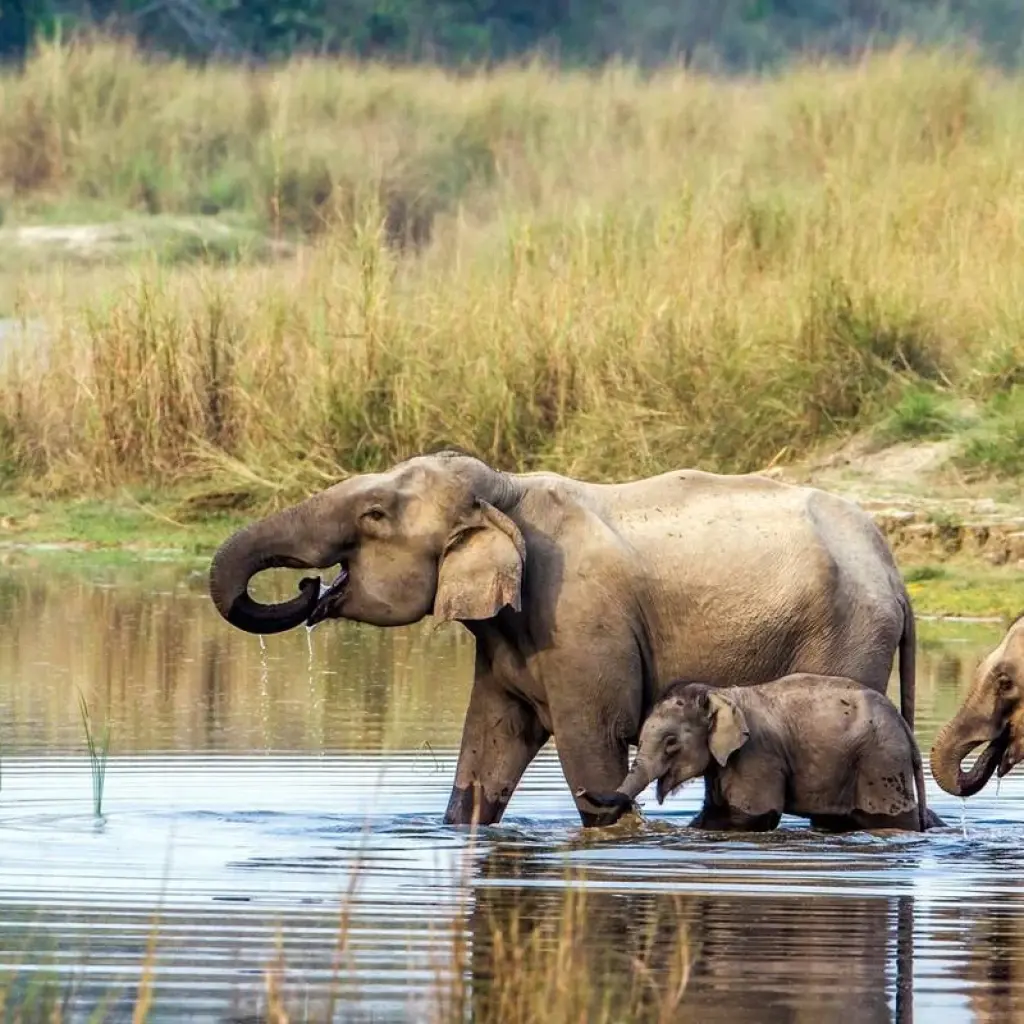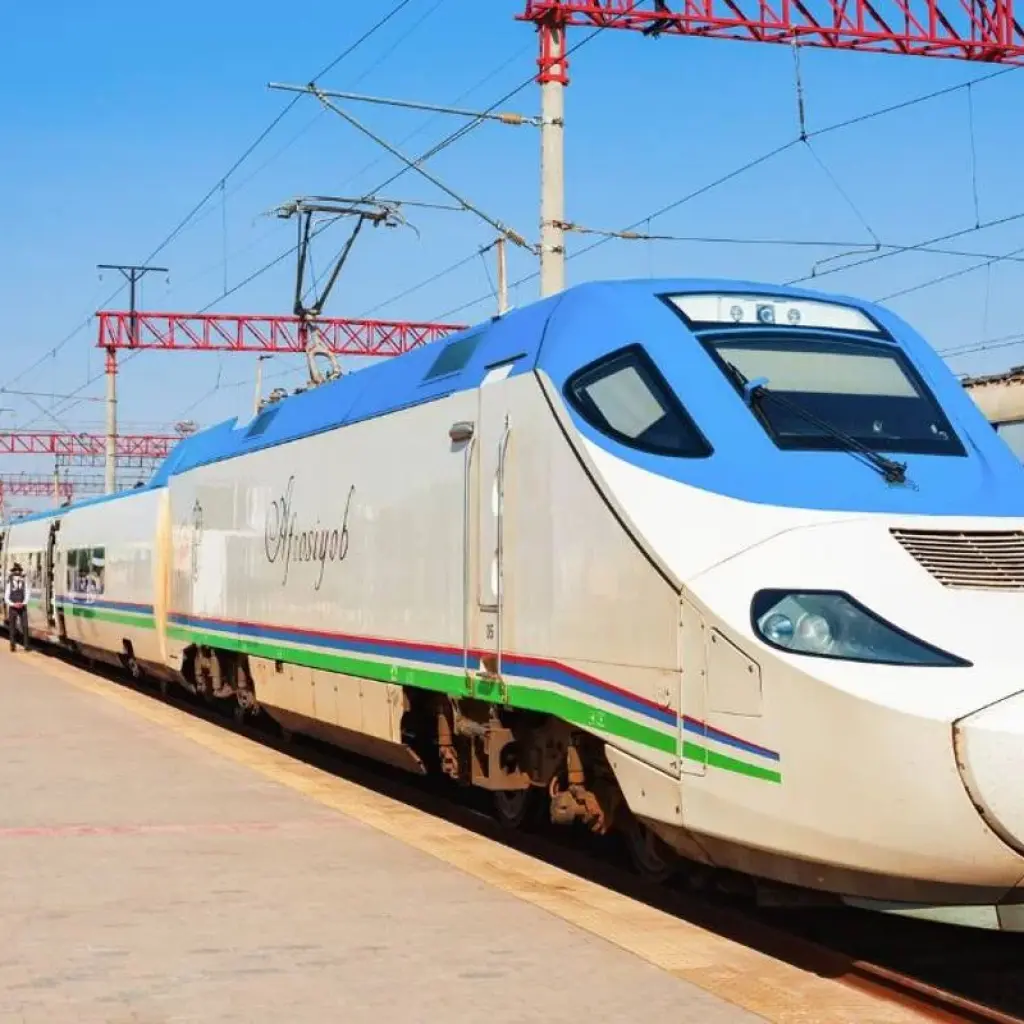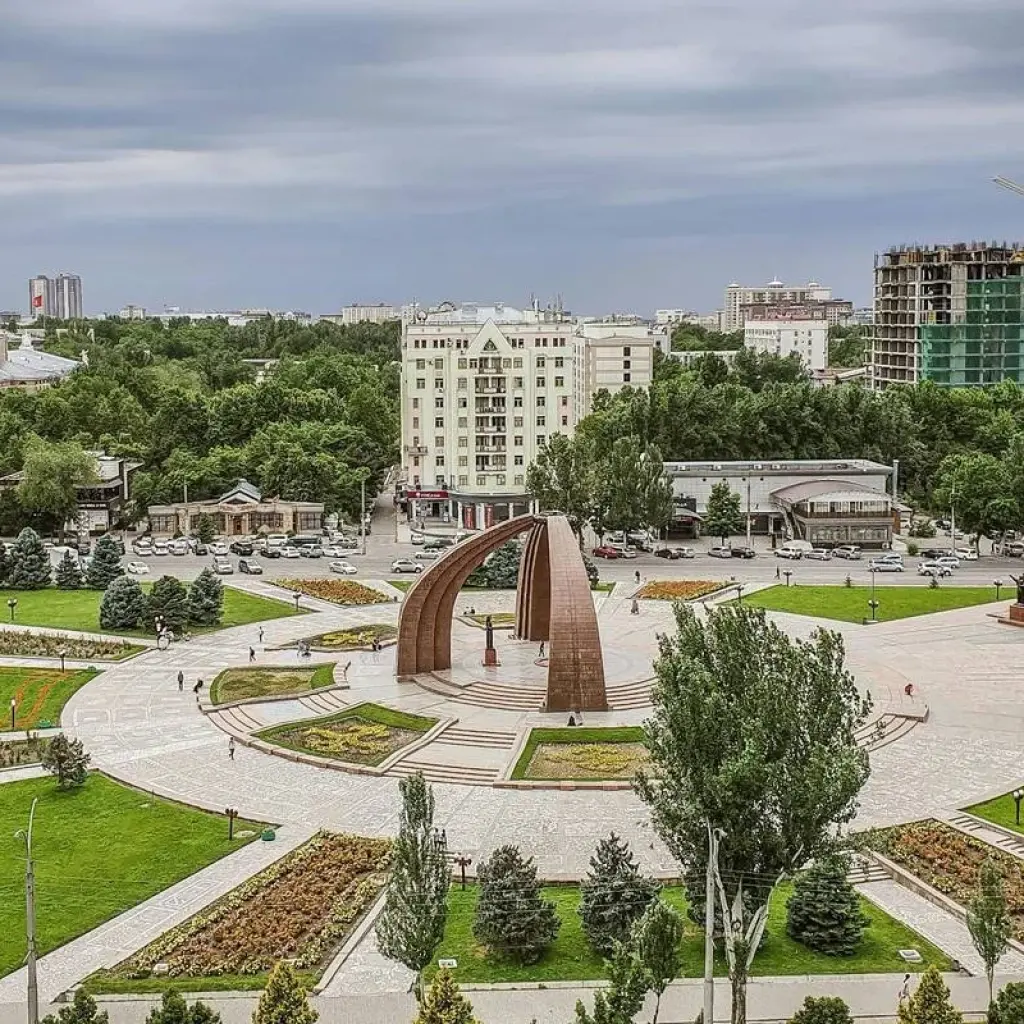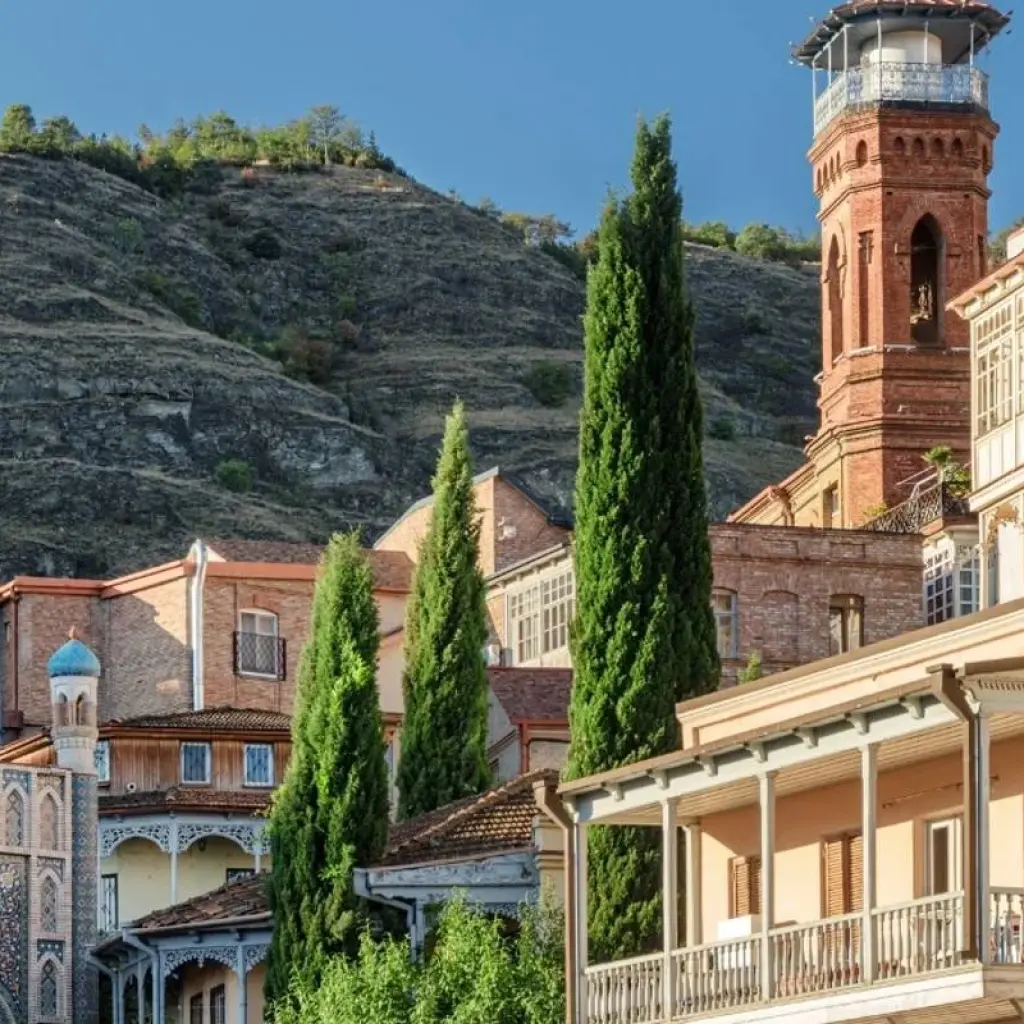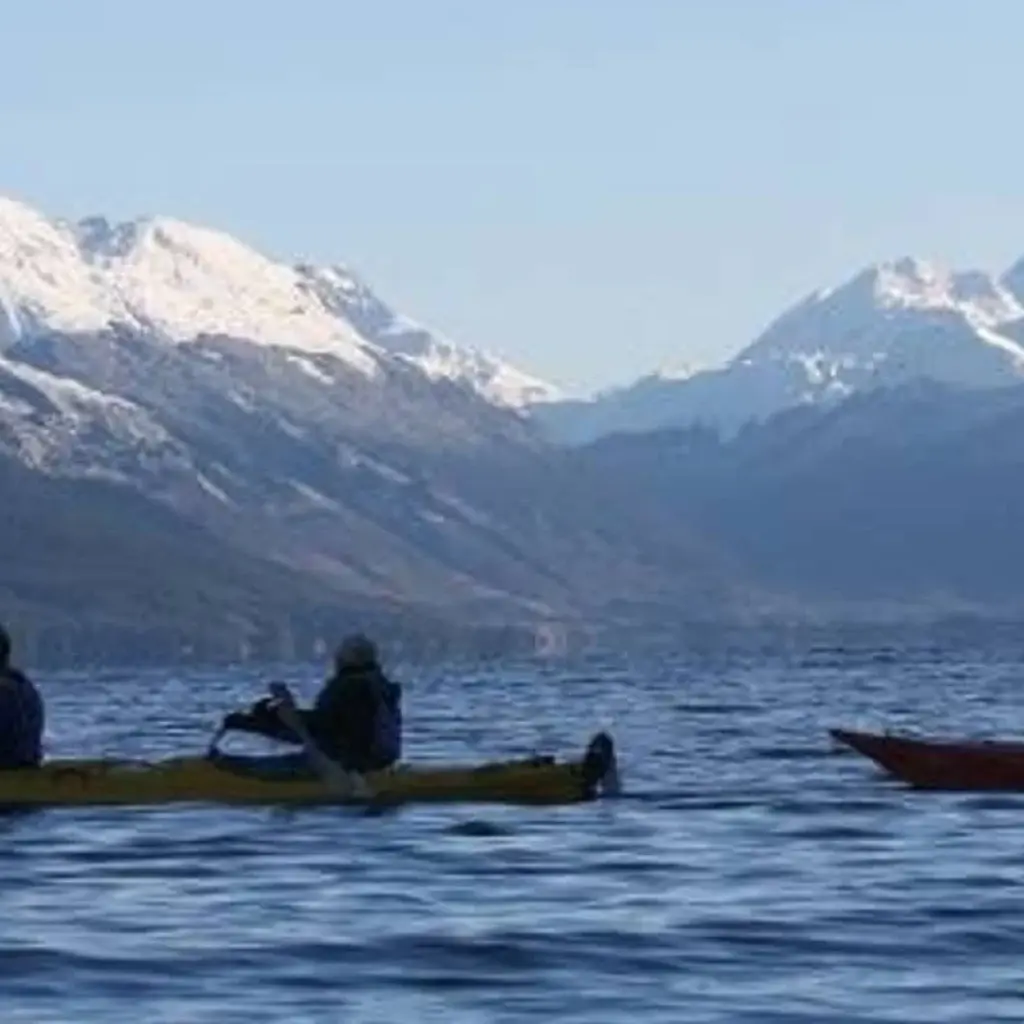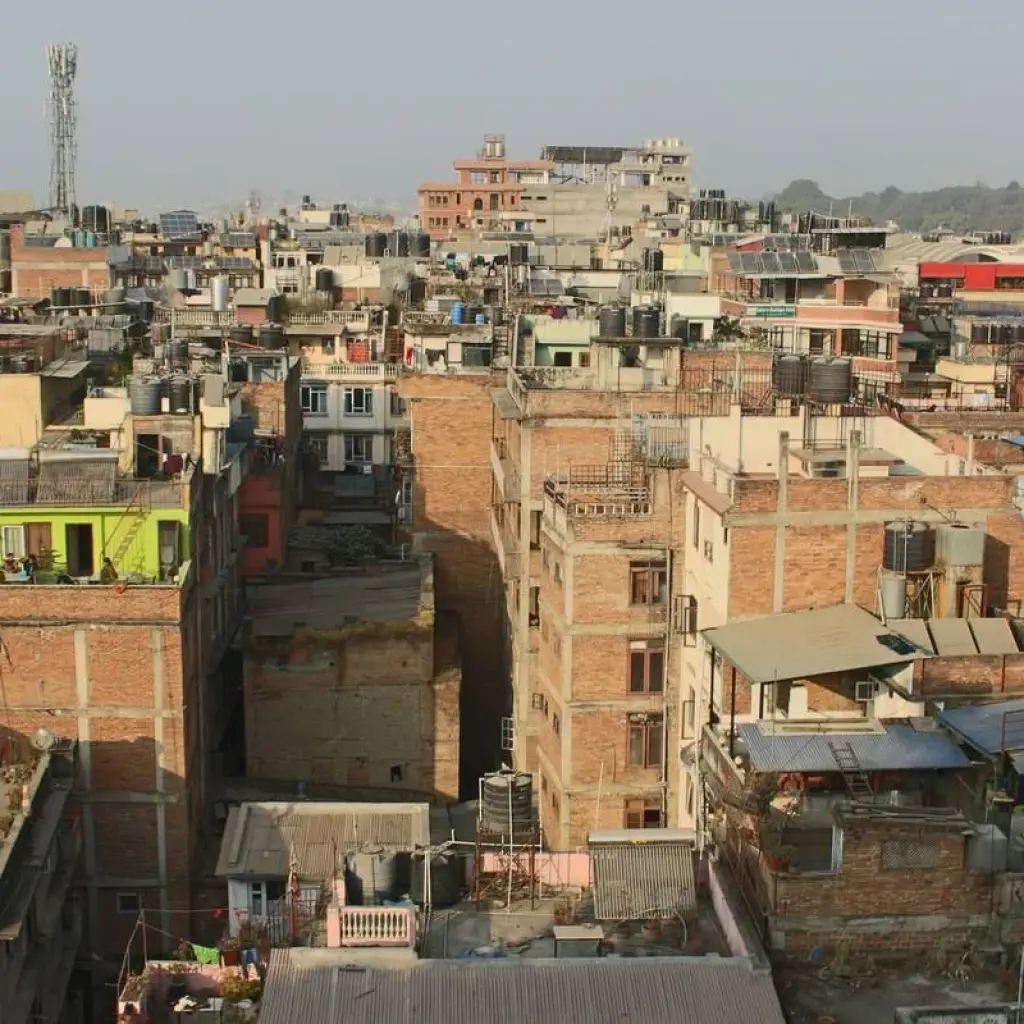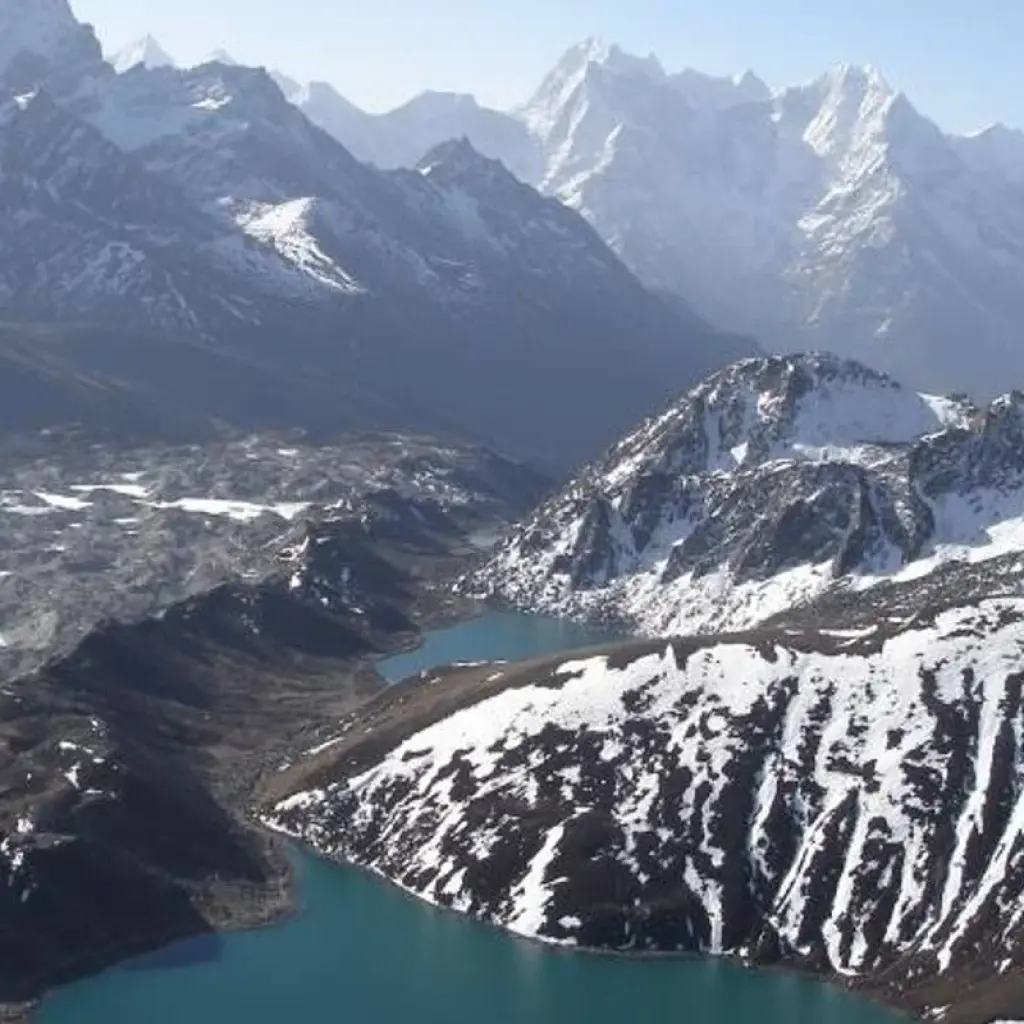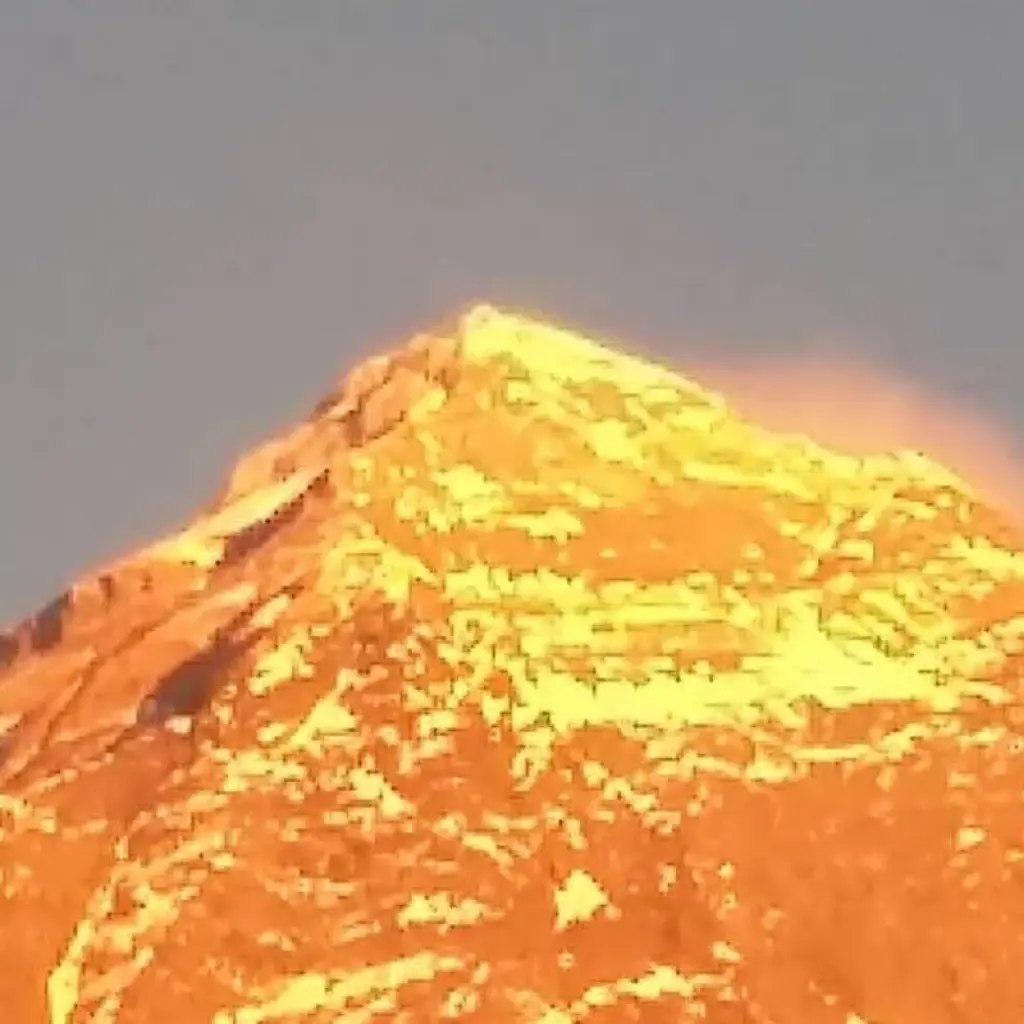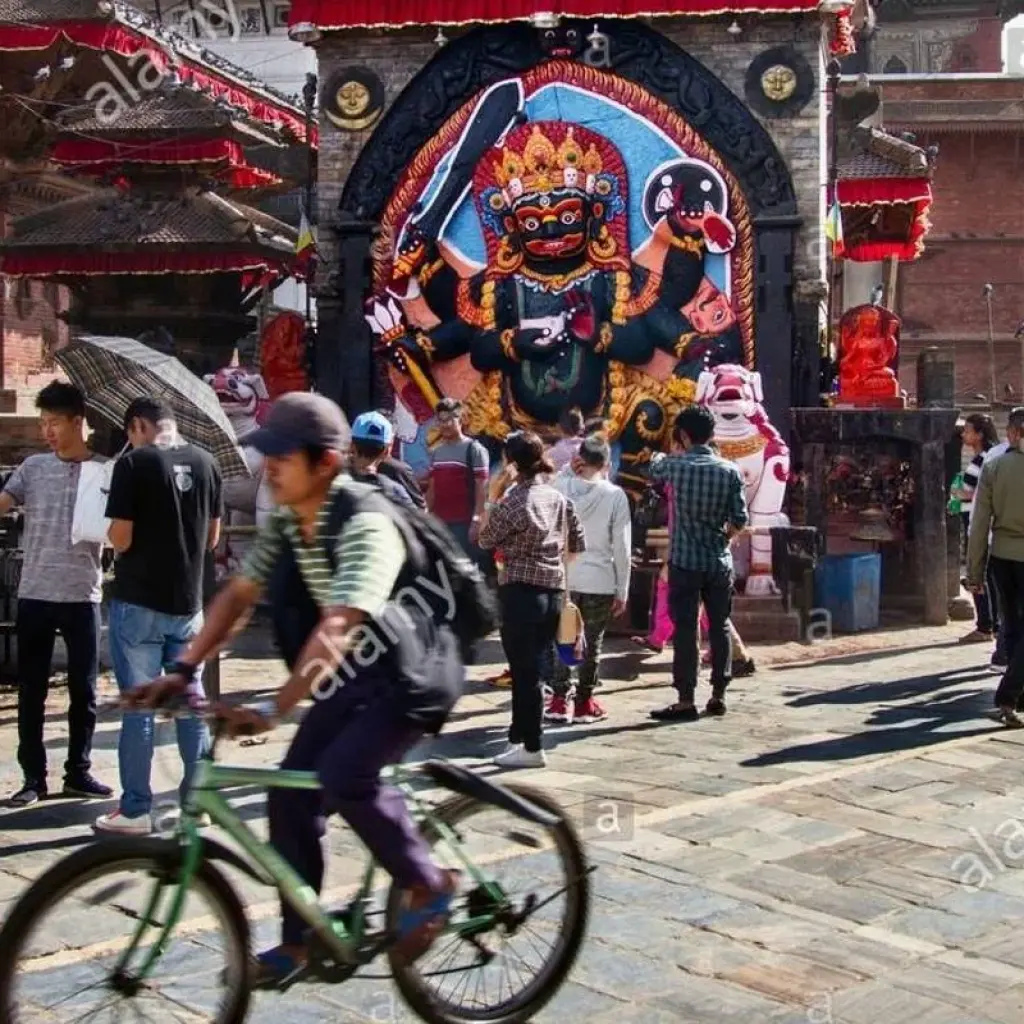Ihre Ankunft in Kathmandu wird durch eine Landung am Tribhuvan International Airport (TIA) gekennzeichnet. Ein Unternehmensvertreter von Himalayan Adventure Treks & Tours wird Sie empfangen und zu Ihrem Hotel bringen. Abends kannst du die Teilnehmer und die Trekmitglieder treffen. Übernachtung in einem Hotel in Kathmandu.
Reiseroute
Höhepunkte
- Genießen Sie die Aussicht auf den Himalaya auf Annapurna, Dhaulagiri und Lamjung Himal.
- Erkunden Sie den Phewa-See im Schatten des Mt. Machhapuchhre (6993 m).
- Herzlicher Empfang und Gastfreundschaft der Gurung- und Magar-Gemeinden.
- Besuchen Sie den Aussichtspunkt Poonhill und das Dorf Ghorepani.
Überblick
Annapurna Himalayas sind ein ikonisches Wahrzeichen in Nepal und Sunrise Poonhill Trek ist eine großartige Einführung in diese Naturwunder. Die Wanderung erkundet die Pfade, die durch dichte Rhododendronwälder führen. In ähnlicher Weise ist der kulturelle Reiz der Dörfer auf der Wanderung ebenso aufregend. Diese gesunde Wanderung führt Sie auch zu zwei der größten touristischen Hotspots des Landes, Pokhara und Kathmandu. Alles in allem ermöglicht die Reise Reisende, die Schönheit Nepals in kurzer Zeit zu genießen.
Zuallererst kommen Sie in Kathmandu an und genießen den herzlichen Empfang dieser Newar-Stadt. Als nächstes fahren Sie westlich der Hauptstadt. Die Fahrt wird ziemlich lang sein und erstreckt sich über den Prithvi Highway. Der Berg. Machhapuchhre oder Fish Tail (6993 m) und Annapurna-Bereiche heißen Sie am Ende der Fahrt in Pokhara willkommen. Hier können Sie in den Straßen von Lakeside chillen. Dann fahren Sie weiter nach Westen nach Nayapul und beginnen die Wanderung. Die Wanderwege führen über den Bhurungdi River und führen nach Nordwesten.
Die erste Station auf dem Sunrise Poonhill Trek ist Tikhedhunga und erreicht Ulleri. Außerdem gehen die Wege auf Steinstufen weiter und führen durch dichten Wald. Die Wege steigen nach Ghorepani auf, nachdem sie unterwegs mehrere Dörfer durchquert haben. In Ghorepani können Reisende die Kultur und Gastfamilie der Gurung genießen. Hier können Sie auch das Dorf erkunden und den Lebensstil der Einheimischen miterleben. Dann wandern Sie zum berühmten Aussichtspunkt von Poonhill. Es ist eines der besten Reiseziele, um die Ausbliauf im Annapurna-Geborde zu genießen. Sie können auch die Wanderung planen, um den Sonnenaufgang über den Bergen wie Annapurna I (8091m), Dhaulagiri (8167m) und Machhapuchhre (6993m) zu genießen. Nach der Wanderung steigt man über die Dörfer Gurung und Magar nach Pokhara ab. Schließlich führt Sie eine weitere lange Fahrt zurück nach Kathmandu und beendet damit die Reise.
Es ist eine einfache Wanderung und selbst Familien mit älteren Menschen und Kindern können die Wanderung machen. Auch die Frühlings- und Herbstsaison ist ideal für die Wanderung. Ebenso können Sie sich während der Wintersaison auch für die Wanderung entscheiden.
Bei Himalayan Adventure Treks & Tours sind wir bestrebt, auf allen unseren Reisen die besten Dienstleistungen zu bieten. Ebenso haben wir qualifizierte Führer und Träger sowie großartige Mitarbeiter des Unternehmens.
Tourprogramm
Ankunft am Flughafen Kathmandu
Startpunkt
Tribhuvan International Airport, त्रिभुवन विमानस्थल, Kathmandu, Bagmati, Nepal
00:00 - 00:00
Fahrt von Kathmandu nach Pokhara (914m) 6 – 7 Stunden (Frühstück)
Diese Fahrt wird den größten Teil unserer Morgenzeit in Anspruch nehmen und einen Großteil des Nachmittags verlassen, um einen wärmenden Blick auf das Pokhara-Tal zu werfen und sich in seine ätherische Schönheit zu verlieben.
Pokhara ist das Touristenparadies voller Natur- und Kulturerbestätten wie Seen, Höhlen, buddhistischen und hinduistischen Tempeln sowie der herrlichen Aussicht auf die Berge.
Sie können die glitzernden weißen Gipfel der Annapurna- und Dhaulagiri-Gebirges beobachten. Abends können Sie um den Fewa-See herumlaufen. Sie können auch den Tal Barahai-Tempel (Inseltempel) besuchen und im See Boot fahren. Übernachten Sie im Hotel in Pokhara.
Fahrt von Pokhara nach Nayapul (1050m) & Trek nach Tikhedhunga (1577m) 3 – 4 Stunden (Frühstück, Mittagessen, Abendessen)
Am Morgen nach dem Frühstück nehmen wir ein Taxi nach Nayapul, etwa eineinhalb Autostunden, um die Annapurna-Gebirgszüge und die Landschaft von Pokhara zu sehen. Sie beginnen Ihre Wanderung von Nayapul (1050 m) und fahren über Birethanti (1065 m). Der erste Teil Ihrer Wanderung ist komfortabel, neben zahlreichen kleinen Weilern und Siedlungen. Danach steigen Sie sanft zum Endziel des Tages nach Tikhedhunga (1577 m) auf. Die Reise umfasst viereinhalb Stunden Trekking. Übernachten Sie in der Lodge.
Treck von Tikhedhunga nach Ghorepani (2860m) 6 – 7 Stunden (Frühstück, Mittagessen, Abendessen)
Ihre Wanderung beginnt im Dorf Tikhedhunga Gurung mit einem steilen 2-stündigen Aufstieg und führt dann sanft durch die Magar-Dörfer Ulleri (2070 m) und Banthanti. Auf dem Weg können Sie die malerische Aussicht auf Machhapuchhare oder Fish Tail (6997 m), Hiunchuli (6441 m) und Annapurna South (7219 m) sehen. Jetzt wird Ihr Weg einfacher, da er durch den Wald führt und sanft zum letzten Lager hinabsteigt. Übernachten Sie in der Lodge.
Treck von Ghorepani nach Pokhara über Poon Hill (3210m) 7 – 8 Stunden (Frühstück, Mittagessen)
Ausflug am frühen Morgen zum Poon Hill (3210 m), um den Sonnenaufgang über den Berg zu genießen. Dhaulagiri (8167 m.), Tukuche Peak (6920 m.), Nilgiri (6940 m.), Varaha Shikhar (7847 m.), Mt. Annapurna I (8091 m.), Annapurna South (7219 m.), Annapurna III (7855 m), Machhapuchhre (6993 m.), Annapurna IV (7525 m), Annapurna II (7937 m.), Lamjung Himal (6931 m.) und andere zahlreiche schneebedeckte Berggipfel.
Nach dem Frühstück folgt die Wanderung von Ghorepani nach Tikhendunga (1577 m) und dann nach Pokhara durch die tiefen Wälder von Rhododendren, Bambus und Eichen. Unterwegs sehen Sie häufig Wasserfälle, Felsen, wilde Tiere, einheimische Vögel und grüne Szenarien. Wir nehmen das Taxi von Nayapul und fahren dann nach Pokhara.
Fahrt von Pokhara nach Kathmandu mit dem Touristenbus 6 – 7 Stunden (Frühstück, Abendessen)
Während Sie von Pokhara nach Kathmandu fahren, fahren Sie nach Damauli, Dumre, Muglin und Kurintar, wo Nepals erste Seilbahn betrieben wird, um den Manakamana-Tempel zu erreichen. Unterwegs können Sie die Aussicht auf die Berge, grüne Landschaften, Reisterrassenfelder, Gemüsefelder und Menschen genießen, die sich mit ihren täglichen Aktivitäten beschäftigen. Von Naubishe steigt man hinauf nach Thankot, dem Tor nach Kathmandu.
Abends können Sie in Thamel für Ihre Freunde und Familie einkaufen. Abschiedsessen am Abend in einem authentischen nepalesischen Restaurant mit einer kulturellen Darbietung.
Abfahrt zum Flughafen (Frühstück)
Ein Vertreter von Himalayan Adventure Treks and Tours bringt Sie etwa 3 Stunden vor Ihrem geplanten Flug zum Flughafen. Auf dem Heimweg haben Sie genügend Zeit, um Ihr nächstes Abenteuer im wundervollen Land Nepal zu planen.
Endpunkt
Tribhuvan International Airport, त्रिभुवन विमानस्थल, Kathmandu, Bagmati, Nepal
00:00 - 00:00
Details zur Tour
accommodation
- Zwei Nächte 3* Hotel in Kathmandu mit Frühstück.
- Zwei Nächte 3* Hotel in Pokhara mit Frühstück.
- Alle Unterkünfte in Lodges/Teehäusern während der Wanderungen.
guide
- Ein erfahrener, hilfsbereiter und freundlicher Guide, Träger (1 Portier für 2 Kunden).
insurance
- Reise- und Rettungsmaßnahmen.
meals
- Mittagessen, Abendessen und Frühstück während des Trekkings.
optional
Equipment List for Sunrise Poonhill Trek:
Sunrise Poonhill Trek is easy trekking in Annapurna Region. Even we do recommend the equipment for Sunrise Poonhill Trek and we hope, this information will be helpful to you so success your trip.
Luggage/Duffle bag:
You will require a duffel bag or a backpack for trekking (45- 55 L) max and all our trekking stuff are kept in this duffle bag and this will be carried by our porters. However, Himalayan Adventure also provides the duffle back if needed.
A day backpack:
You will need a day backpack and you will be carrying it every day by yourself and we recommend you it has to be at least 25L and you can carry important documents like Passport, credit card along with a need to carry a water bottle, snacks bar and clothing layers (hat, gloves, fleece, sunblock, poles, etc…).
Trekking/Hiking boots:
It is very important to have good trekking boots and it should be waterproof (in case of snow, or rain) Make sure it should be fit on your feet and comfortable during walking. Also, recommend you bring the Crompton during the winter season in Nepal.
Sport sandals:
You need to have a pair of sports shoes or sandals to use while you are in camp or tea houses after the trek.
Sneakers:
Better to have trekking boots so sneakers are not suitable for this trek so you can leave your sneakers in Kathmandu hotel until you get back.
Sleeping Bag:
You need to have a lightweight sleeping bag that works for the minus 10 degrees for the summer season but during the winter we recommend minus 15 degrees for the Sunrise Poonhill Trek. Himalayan Adventure can provide it if you need one but has to be returned after the trek.
Fleece jacket:
You need to have good quality fleece jacket at least 1 synthetic jacket or pullovers are a great alternative to fleece because they are lighter and more compressible and gives you warm enough during the trekking.
Down jacket:
Down jacket is compulsory and recommends you to bring the warm enough so can keep you warm during the trek.
Socks:
You need to have at least 2 pairs of thick socks during the spring & autumn but winter and monsoon need at list 3 pairs of socks for the Sunrise Poonhill Trek.
Lightweight/ warm insulated pants:
You need to have at least 2 pairs of lightweight trekking pants like Lightweight Pants/ Nylon hiking shorts, Water/windproof trousers, and Casual pants so we can use as the weather condition.
Short-sleeved shirts:
You need to have 2 ice-breaker merino wool to keep you warm from the cold or synthetic shirts and if you are not allergic to wool products, merino wool is the ideal for Sunrise Poonhill Trek.
Long-sleeved shirts:
You need to have at least two shirts.
Underwear:
You need to have a few pairs of underwear and this can be as much as you need as there are no washing facilities during the trek so, we highly recommend you to have enough pair of underwear.
Waterproof jacket:
You need at least one waterproof jacket for the rain/snow and wind and waterproof pants may be on option.
Head and face gear:
Sun hat or cap during the day time, Woolen Hat for morning & Evening and Polarized sunglasses are compulsory.
Hand gear:
You need warm gloves.
Traveling supplies:
Adapter Plug for Charging the Camera and Mobile, Camera belt, Passport belt ( nice to have), Swiss army knife (option), Flashlight, Headlamp, Water bottle, Extra camera battery, Hand sanitizer, Alarm clock, Hiking poles (optional ) and Binoculars (optional).
Toiletries:
Razor, razor blades, shaving cream, aftershave toothbrush, toothpaste, dental floss, sunscreen, toilet paper, small towel, and period pads (for women).
Medication:
First Aid Medical Kit box (can be purchased in Thamel Kathmandu), Altitude Medicines (Diamox), Tylenol, aspirin, ibuprofen, Anti-diarrheic, Powerful antibiotics, and Nasal Spray or Drops.
Physical Fitness:
Many people have questions as to what level of physical fitness is required for trekking in Nepal and that is extremely reliant on what activity the visitor is engaging in Nepal With that said, for a standard easy trek to Extreme hard level of trekking. The daily activity (trek) would be 5-6 hours,(depend on the trekking trail) and elevation will generally not exceed 5,600 meters like Everest Base Camp, Throng la passes, Chola passes treks and other passes or Base Camp but some of them are less than 4000m. The trekking day is involving both long steep climbs, and descents with a variety of terrain underfoot from well-trodden paths, to rocks covered with ice or snow, depending on the season. Mostly a day would include a number of climbs or descents of 600 meters more or less, starting after the early morning breakfast, resting at a lunch place in the afternoon, then continuous trekking until arriving at the teahouse.
In preparation for the trekking in Nepal, it is important, to begin with, the basic training requirement at least 2 months before departing for trekking in Nepal. Two to three hours of aerobic exercise like running, walking, swimming, cycling & some gym work per week is the minimum and most will find it beneficial to add some basic strength training to their physical fitness routine required for the hard trekking and for normal and easy trek just have some physical fitness is enough. One of the best ways to prepare is to take practice hikes with a daypack roughly the same weight as what you will be taking during the trek. Your calf should be enough fit and prepare for trekking. Mostly during the trekking calf paining or tired is the main issue. Do this only after a baseline of fitness has been reached. Moving fast is not our goal, will provide a more enjoyable and safe adventure trekking in Nepal for all easy and hard level.
Trekking Seasons in Nepal:
There are main two seasons in which Nepal where the most amount of visitors visit. (September, October & November) being the most popular season which is also called the peak season in Nepal, and spring (March, April & May) coming in close behind which is also called the mini-season in Nepal. The summer months of June, July, and August are the monsoon season and most of the time raining as such the trails are mostly washed out sometimes, and roads can sometimes be impassible due to landslide activates. Nevertheless, you can trek to rain-shadow regions like Upper Dolpo and Upper Mustang during the monsoon seasons. Nepal is a suitable destination for all seasons.
Winter is very dry & extremely cold and all the high passes become inaccessible due to ice and snow conditions. The temperature doesn’t usually fluctuate during the day time temperature is around 20-25 degrees. However, you gain the altitude the temperature decreases. The temperature can drop to around 0 to -25 degrees at night when staying at tented camps in Himalayan regions. Winter trek in higher altitudes is not advised due to the danger of avalanches and also altitude sickness. Although some may enjoy the sight of the snow-covered mountains as you reach your destination. However, the temperature does not change as much in lower mountain regions the nights are slightly colder than days’ time.
Autumn &Spring is the best timing for trekking in Nepal because the weather is generally warm and dry, and flowers are in bloom in the lower elevations of the country on the same time you can see the many festivals during that period.
Trekking Day:
A typical trekking day begins with the early morning breakfast around 7 am in the hotel. (Depend on the trekking region). It would advise you to pack your trekking gears in a duffle bag and essential supplies in your day pack after having breakfast; we begin the trek and head along the trail at around 8 am. The morning walk is more energetics to be longer as we begin with refreshed bodies and enthusiasm. A good morning’s walk, we make a stop for lunch at around 11-12 pm. The lunch involves group meals enjoying the vicinity around the stop & enjoys the organic & local food in the mountain. After resting for about an hour or two, we resume our trek to reach teahouse or camp by 2-3 pm. The afternoon walk is relatively shorter and can involve games and side trips as organized by the trekking experienced guides. You also can enjoy breaks during the trek to relax, read, and stroll around the area or doing yoga. You can explore with the local people and observe their lifestyle & culture. Dinner is served around 7-8 in the evening to round off the day.
Meals and Accommodations:
During the trekking period, the accommodation is commonly referred to as teahouses. These are family-run basic lodges that fill the role of the restaurant, Dining hall, and boarding house for tourists. Now a day’s electricity can be found in the rooms, which mean one light bulb, and one or two outlets for charging electronics. The common areas are also lit by electricity. Alternatively, teahouses may also use solar, hydroelectric, or have electrical lines running into the village, so the commonality and availability of electricity may vary. Still, a few of the trekking route electricity service is not available. Use the local traditional kerosene light.
Most of the teahouses have private rooms, though if the trek is in a more remote or high altitude place there are limited teahouses so season time dormitories are the norm. Most of the room has 2 single beds with basic bedding, and the bathroom is shared. Some of the places we can get the private bathroom also with a mix of western and squat style toilets in the bathrooms.
Breakfast and dinner are taken at the same teahouses and these lodges have large family style dining rooms centered on a stove or coal to provide heat basically in mountain areas. Most of the areas menu will have Nepali style western foods such as Pancake, pizza, Burger, fries, etc. Also on the menu is the traditional Nepali food Dal Bhat meal. This is a lentil soup with rice, vegetable, Pickle, or meat curry. Most menus will also offer a smattering of local cuisine.
Internal Flight Delays:
Nepal is an incredible and beautiful country of mixed of the White Mountains, deep valleys, Landscape, rivers, and green rolling hills. With this incredible diversity of landscapes, road travel can be extremely time consuming and flights within Nepal to reach popular trekking destinations is the easiest way. Not all the trekking destination has flight service, so road transportation is the only option. Mountainous terrain also comes with the possibility of in-climate weather. It mentions the incredibly high number of visitors during peak seasons makes internal flight delays a genuine possibility. To manage this situation, it may be helpful to have a few extras days on either end of your tour. If any cancellations or flight delays do occur (high chances of flight delays from around Kathmandu to Lukla, Everest region, Pokhara to Jomsom, Annapurna region), we also provide services to arrange chopper on the last stage to help you to be on your schedule on the premises of Civil Aviation Rules in Nepal which state that helicopters can fly if the visibility is 1500m. The cost ranges from USD400 to USD650 according to the number of passengers. The payment can be made either to the helicopter company or to us directly and can be made either by cash or using a credit card. It will be beneficial to purchase and review your insurance, the insurance companies may cover some of the alternative measures of travel. Flight insurance may cover changing your international flight if it is necessary.
Travel Insurance:
Most expeditions, Adventurous trekking, and tours require that travel insurance and it is purchased prior to arriving in Nepal, but other normal treks and tours may not require. However, travel insurance is definitely an important consideration. There are a number of reasons to consider insurance. Firstly, it may be required, so check to see what is being asked for by the company. Second, Nepal is a landlocked country, and there are only a few direct flights. Travel in and out from country can encounter some disruptions if purchasing insurance, make sure flight delays and cancellations also included. Always choose insurance that, though every safeguard is in place during your Holiday, there are always extenuating circumstances that may result in an accident during trekking & tours. Read carefully printout of insurance policies to ensure that the trekking or any other activity you are engaging in is covered or not, as some policies have stopped covering trekking in certain places. If you are going above 5000 m or high always mention the policies so it’s cover the chopper service in the last condition. It is very important that if you have the comfort of good insurance, so do the research and choose carefully which makes your trip relaxing and joyful.
Nepal Visa Entry Procedure:
There is only one International airport which is the Tribhuvan International Airport in Nepal. Immigration Office, TIA (Tribhuvan International Airport) under the Department of Immigration has been facilitating tourists flying to Nepal by providing Visa on Arrival.
‘On Arrival’ visa procedure is very quick and simple. October, November, March, April can expect some queues during peak Tourist season and October is basically the Nepalese got the Main festival Dashain. You can also get Visa from Nepalese Diplomatic Missions stationed abroad prior to your arrival. The choice is yours.
Visa obtains from Nepalese Diplomatic Missions, and then you must enter Nepal within six months from the visa issued date. Your total stay is counted starting from the day you enter into Nepal.
Visas obtained on Arrival at the Entry and Exit points are ‘Tourist Visas’. They bear multiple Re entry facility. Tourist Visa ‘On Arrival’ is the only entry visa to Nepal. If you are visiting Nepal for the purposes other than Tourism (sightseeing, tour, travel, mountaineering, trekking, visiting friends and families), you should still get ‘Tourist Visa’ to get into the country. However, you must change the category of visa as per your purpose and length of stay in Nepal from the Department of Immigration by producing required documents.
Please click below for the online Visa form.
http://online.nepalimmigration.gov.np/tourist-visa
The following visa rules apply for tourists:
For 15 days Multiple Entry Visa, the visa fee is the US $30 or equivalent foreign currency.
For 30 days Multiple Entry Visa, the visa fee is the US $ 40 or equivalent foreign currency.
For 100 days Multiple Entry Visa, the visa fee is the US $ 100 or equivalent foreign currency.
According to the immigration regulations, a tourist is allowed to stay in Nepal only for 150 days in a year. You can extend the visa up to another 90 days.
US$ 2 or equivalent Nepalese currency per day for extension.
Additional US$ 25 or equivalent Nepalese currency on visa fee, if Multiple Entry facility is required for the extended period
For more details please visit our FAQ link
https://www.himalayanadventuretreks.com/faq/
Acute Mountain Sickness (AMS):
Acute Mountain Sickness (AMS) is usually seen in un-acclimatized people shortly after ascent to high altitudes. The condition occurs due to the thinning of air as the altitude increases. The condition, if not taken seriously and treated immediately, can be life-threatening and its symptoms can be seen generally above 3200 meters. The symptoms of Acute Mountain Sickness are nausea, vomiting, tiredness, shortness of breath, and cerebral pain. The itineraries are designed to properly acclimatize you to the change in high altitude climate and sufficient precautionary measures too are taken to take utmost caution for our valuable guests. Our staff also equipped with cell phones and satellite phones (Option) in the occurrence of any emergency cases. We are greatly driven to keep the safety and security of our clients as our foremost concern.
Drinking-Water:
Water is essential for life, and clean water is imperative while on holiday. When visiting the less developed countries like Nepal it is a concern that all travelers should consider. There are few options when trekking or traveling in Nepal that will mitigate any chances of drinking contaminated water. The first consideration to take into account is that tap water should not be ingested. That even means when brushing your teeth in an urban area. Most will choose to buy bottled water and if doing so make sure the cap has sealed properly. Plastic bottle reuse is a big problem, and with that being said there are other options on the market to assist in making water drinkable. Mountain spring water is drinkable but if you use the purified tablet. The conservation area project also sells this tablet most of the trekking area. A guide will assist you to find out it also.
Arrival Instruction:
Upon your arrival at Tribhuvan International Airport (TIA) Kathmandu Nepal, our company representatives are stationed to welcome you to the country. We request you to carefully look for your and company name placard being held by our representatives following the events upon landing. Our representatives will be responsible to escort you up to your hotel in Kathmandu. There are many brokers, Taxi drivers, and trouble maker people offering you to carry your luggage and take you to your destination as you exit from the gate. We request you to pay no attention to these people and follow the company representatives and follow their instructions.
How to Book Your Tour:
Before booking any tour or trekking please read all the terms and conditions thoroughly and call or email the company representative with any questions prior to making any payments. Begin by filling out a booking form and pay the non-refundable deposit. Fill out the form completely and if any confusion contacts the company person so as not to disrupt the expediency of the process. The form may be submitted online or by downloading the form and mailing or Whatsapp the form to your company representative.
It is very important to understand all aspects of the chosen trip, from what’s included and excluded, to the level of service, or even what trip may be right for your level of experience and fitness. Take the time to get all the questions answered so that when booking the trip, it is without trepidation.
others
- Abholung vom Flughafen und Transfer zum Hotel.
- Zwei Nächte 3* Hotel in Kathmandu mit Frühstück.
- Zwei Nächte 3* Hotel in Pokhara mit Frühstück.
- Kathmandu/Pokhara/Kathmandu mit dem Touristenbus.
- Pokhara/Nayapul/Pokhara mit dem Taxi.
- Mittagessen, Abendessen und Frühstück während des Trekkings.
- Nationalpark-Genehmigung, Genehmigung für das Informationsmanagementsystem (TIMS) von Wanderern.
- Alle notwendigen Papierarbeiten.
- Alle Unterkünfte in Lodges/Teehäusern während der Wanderungen.
- Ein erfahrener, hilfsbereiter und freundlicher Guide, Träger (1 Portier für 2 Kunden).
- Reise- und Rettungsvorkehrungen. Medizinische Versorgung (Erste-Hilfe-Set wird erhältlich sein).
- Medizinische Versorgung (Erste-Hilfe-Kasten wird erhältlich sein).
- Abschiedsessen von gestern Abend in einem authentischen nepalesischen Restaurant mit einer kulturellen Aufführung.
- Nepal Visagebühr können Sie leicht am Flughafen Kathmandu erhalten.
- Internationale Flüge von und nach Kathmandu
- Reise- und Rettungsversicherung.
- Persönliche Ausgaben (Telefonate, Wäsche, Barrechnungen, Aufladen des Akkus, zusätzliche Träger, Flaschen- oder abgekochtes Wasser, heiße Dusche usw.).
transport
- Abholung vom Flughafen und Transfer zum Hotel.
- Kathmandu/Pokhara/Kathmandu mit dem Touristenbus. (Flug/Privatfahrzeug gegen Aufpreis)
- Pokhara/Nayapul/Pokhara mit dem Taxi.
Gut zu wissen
Währung
Nepalese Rupee
Nepal

